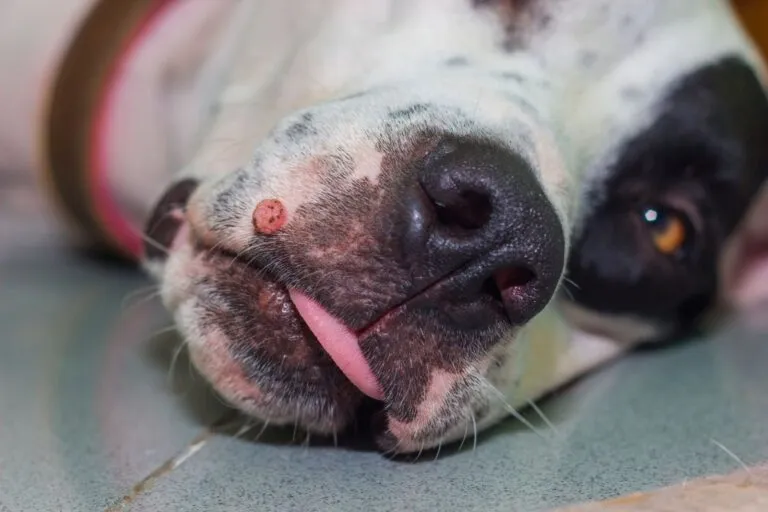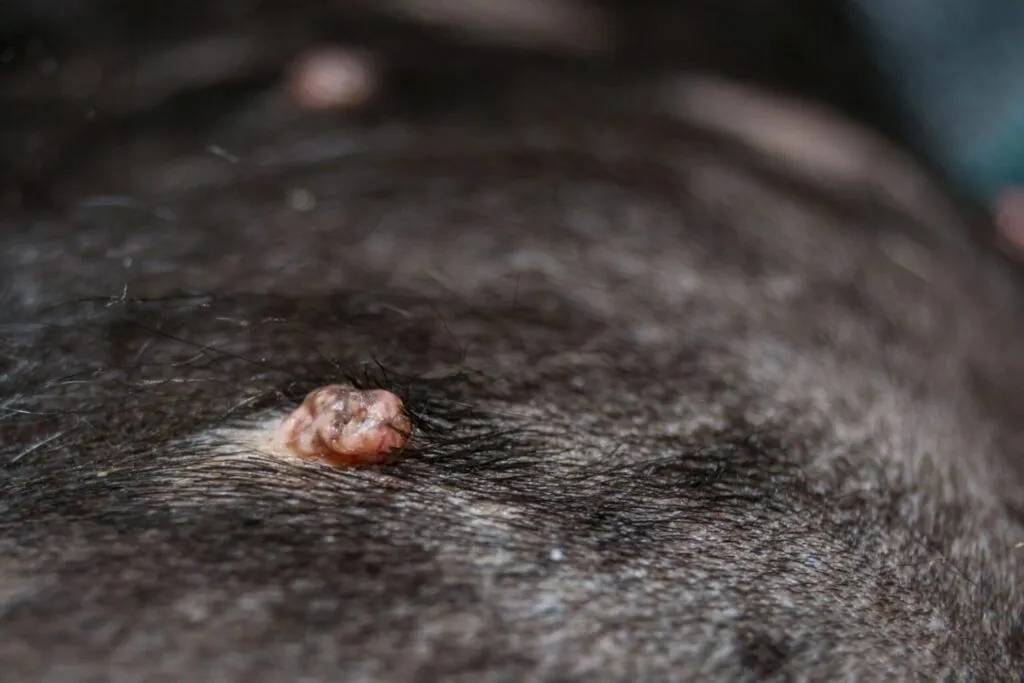Dog warts are often described as ‘cauliflower-like’ and can appear alone or in clusters. Not all warts are the same though – their colour and shape can vary, as can their consistency, ranging from soft to firm. As warts form in or on the skin, they move with it.
If a bacterial infection occurs at the wart site, it might become inflamed. Symptoms include swelling, redness, and in some cases, pus.
How Big Are Dog Warts?
Warts usually start as small papules about half a centimetre in size, but they can grow to warts of approximately two centimetres.
Common Sites for Warts on Dogs
As skin tumours, warts can pop up anywhere on the body’s skin-covered areas. This means papillomas in dogs aren’t just found on ears, limbs, or paw pads, but also on mucous membranes in the mouth or oesophagus. Some warts appear on the external genitalia too.
When Should I Show My Dog’s Warts to the Vet?
Since warts can resemble other tumours, it’s important that you get any growth checked by your vet. They can take a closer look and differentiate between malignant and benign skin tumours.

